The choice of HR analytics software is an important decision that can significantly impact your organization’s human resources strategy. Are you using the right tools to turn workforce data and people analytics into better HR decisions?
HR analytics software transforms how businesses track, understand, and develop their workforce, enhancing employee experience by providing essential metrics and predictive insights that support better decision-making.
This article is designed to provide comprehensive guidance on turning people data into actionable insights. It covers the core features, types of analytics, and our top 14 recommended tools for 2025. We aim to help you understand which tools excel in specific areas and how to choose the right software to enhance your HR strategy.
Table of Contents
- What is HR analytics software?
- 3 key features to look for in HR analytics tools
- 3 types of HR analytics
- Top 14 HR analytics software solutions for 2025
- Choosing the right HR analytics tool
- How time doctor complements HR analytics
What is HR analytics software?
HR analytics software provides an important analytics solution for companies to address workforce challenges. However, it’s important to note that implementing and using this software effectively can be a complex process that requires careful planning and ongoing maintenance.
This software enables companies to understand HR metrics, employee productivity, retention, engagement, and hiring success metrics. With these insights, HR teams can develop strategies for talent acquisition that are aligned with organizational goals.
For example, an HR analytics platform might analyze employee engagement data to uncover satisfaction drivers, such as benefits, work-life balance, or growth opportunities. HR can implement targeted improvements to enhance workforce engagement and reduce turnover using this data.
Similarly, the software could be used to analyze performance metrics to identify top performers and areas for improvement or to forecast future hiring needs based on turnover rates and business growth projections.
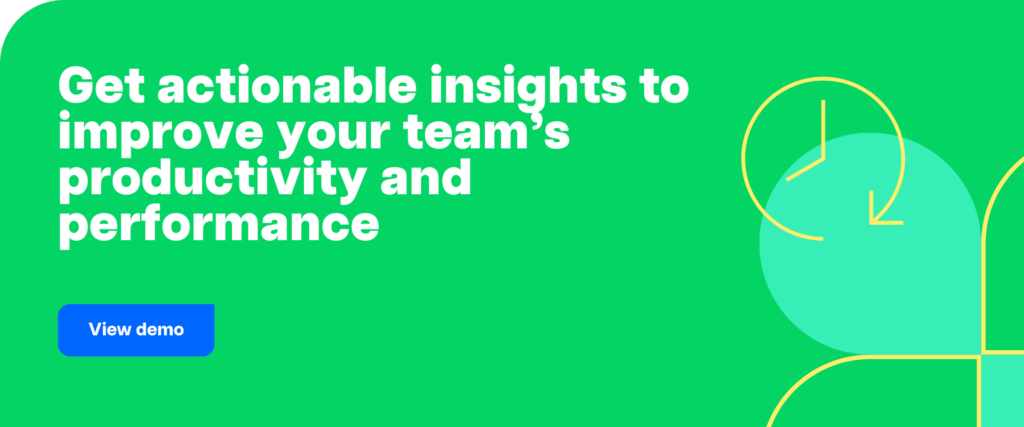
3 key features to look for in HR analytics tools
Choosing the right HR analytics software means selecting tools that align with your organization’s needs. Here are three essential features to consider:
Data integration and visualization
Look for tools that integrate smoothly with other HR systems, such as payroll or time-tracking software, and leverage automation to create a complete view of workforce data. Strong data analytics capabilities make insights into employee performance actionable and accessible. Additionally, features like dashboards and charts help visualize complex data, providing valuable insights and enabling quick decision-making.
Customization and scalability
Choose software that grows with your company’s needs. Scalable tools effortlessly handle expanding data, while customization lets HR teams create tailored reports and analytics for talent management and othr HR objectives.Review pricing to ensure the tool delivers strong ROI.
Security and compliance
HR data is sensitive, and HR professionals should prioritize software that adheres to privacy regulations, such as GDPR, while providing strong security features to protect employee information.
3 types of HR analytics
Understanding different types of HR analytics will help you select a tool that matches your business goals:
Descriptive analytics
Descriptive analytics focuses on understanding past data, such as turnover rates or performance metrics or KPIs. This approach helps organizations identify trends and assess historical workforce patterns.
Predictive analytics
Predictive analytics uses historical data to forecast trends, like which employees might leave or the company’s future hiring needs. This helps HR teams proactively address potential issues, including workforce planning, before they impact the organization.
Prescriptive analytics
Prescriptive analytics provides actionable recommendations to optimize HR processes. For example, if the software indicates high burnout risk in a specific department, it might suggest increasing staffing or providing additional resources.
Top 14 HR analytics software solutions for 2025
HR or people analytics software has become essential for effective recruitment, productivity tracking, and engagement analysis, helping HR teams make data-informed decisions. Based on insights from Forbes, G2 and our own research, here are 14 leading tools, each excelling in a specific area:
1. Visier – Best for predictive insights
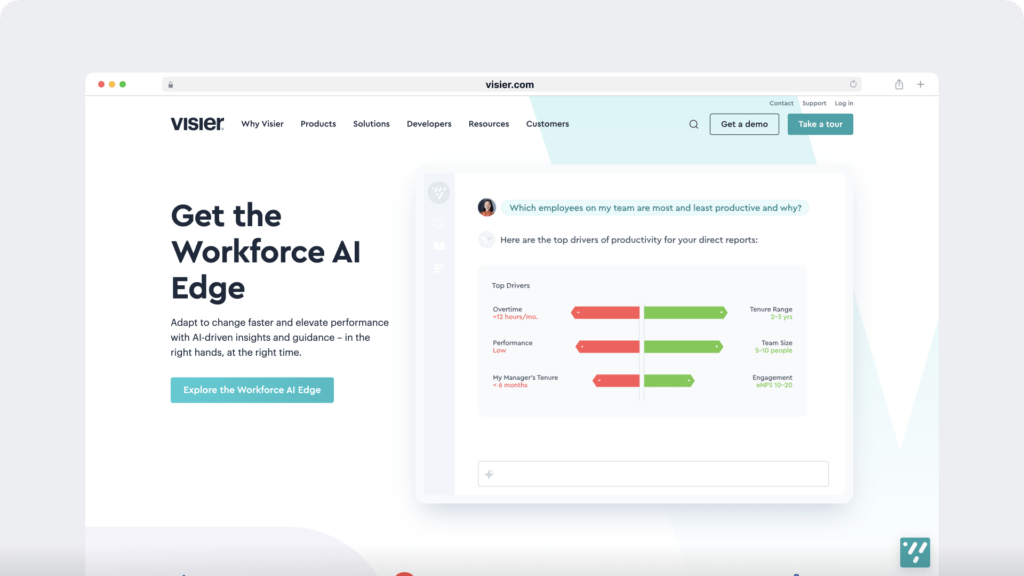
Known for its advanced ai-powered predictive capabilities, Visier uses machine learning to help companies forecast trends like attrition and headcount needs.
Example: A manufacturing firm uses Visier to predict seasonal staffing needs and ensures it hires the right number of temporary employees.
2. CruncHR – Best for working across platforms
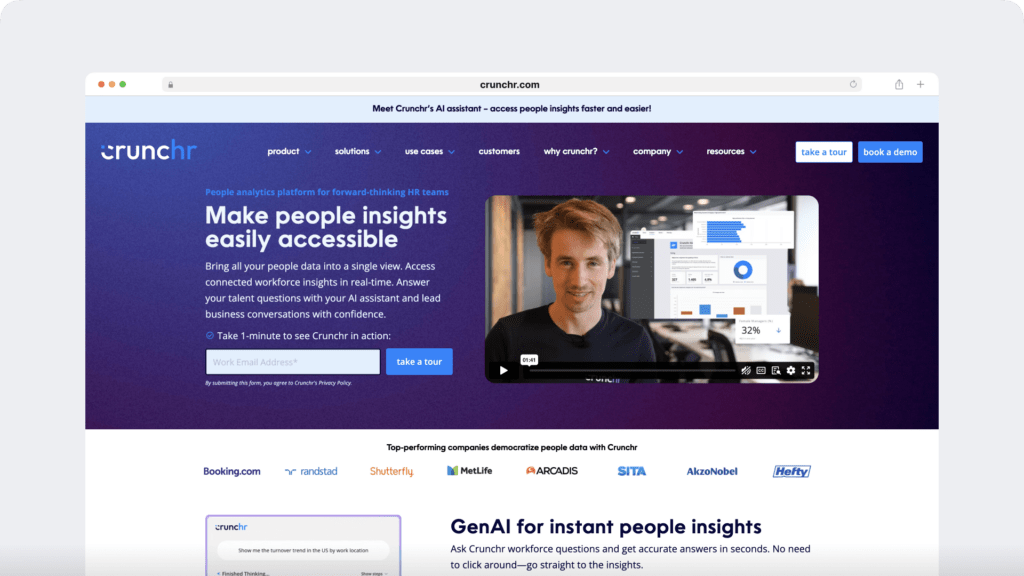
CruncHR integrates smoothly with multiple HR systems, providing comprehensive workforce analytics and enabling organizations to visualize data from various sources—ideal for global businesses with different HRIS systems across regions.
3. ADP Workforce Now – Best for all-in-one HR management
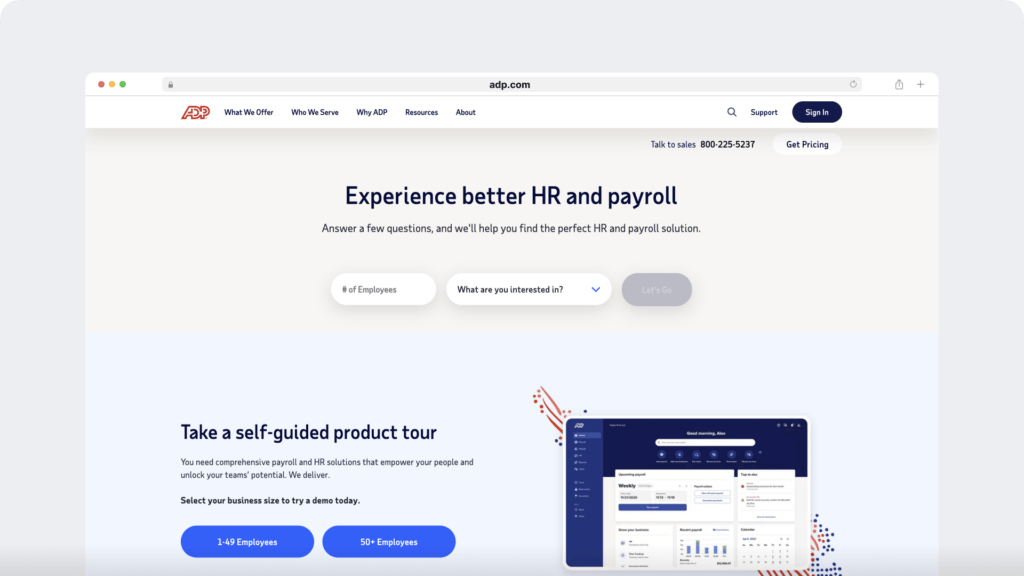
ADP Workforce Now combines payroll, benefits, and employee management with analytics, providing the HR department with actionable insights across these functions.
Example: ADP Workforce Now helps companies track attendance and link it to performance metrics.
4. Humanforce – Best for ease of use
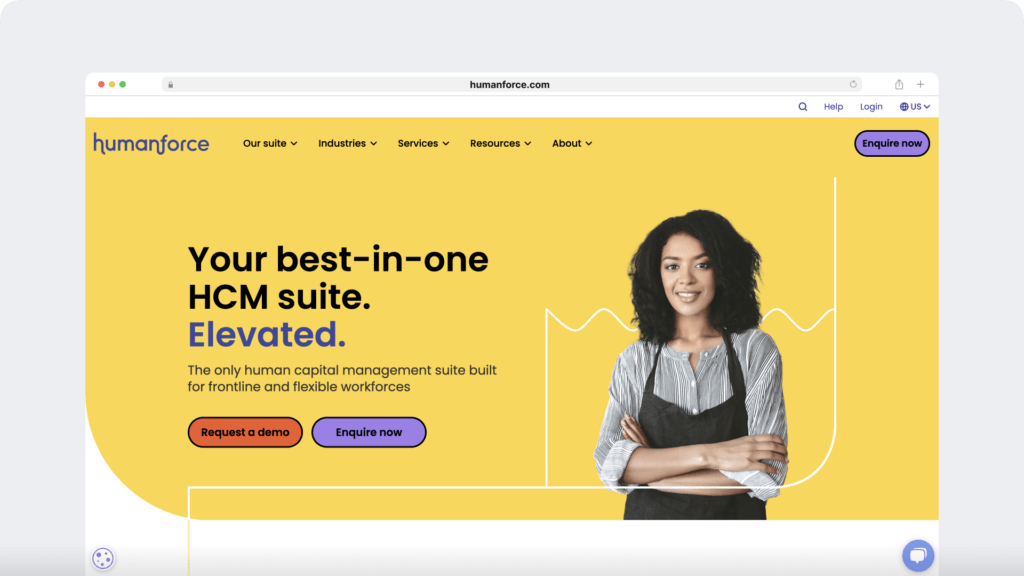
Known for its intuitive interface, Humanforce is designed for small to medium businesses focused on workforce optimization. Its user-friendly interface makes it easy for HR teams to streamline shift scheduling and monitor productivity
Example: A retail chain uses Humanforce to streamline shift scheduling and monitor location productivity.
5. Deel – Best for managing distributed teams
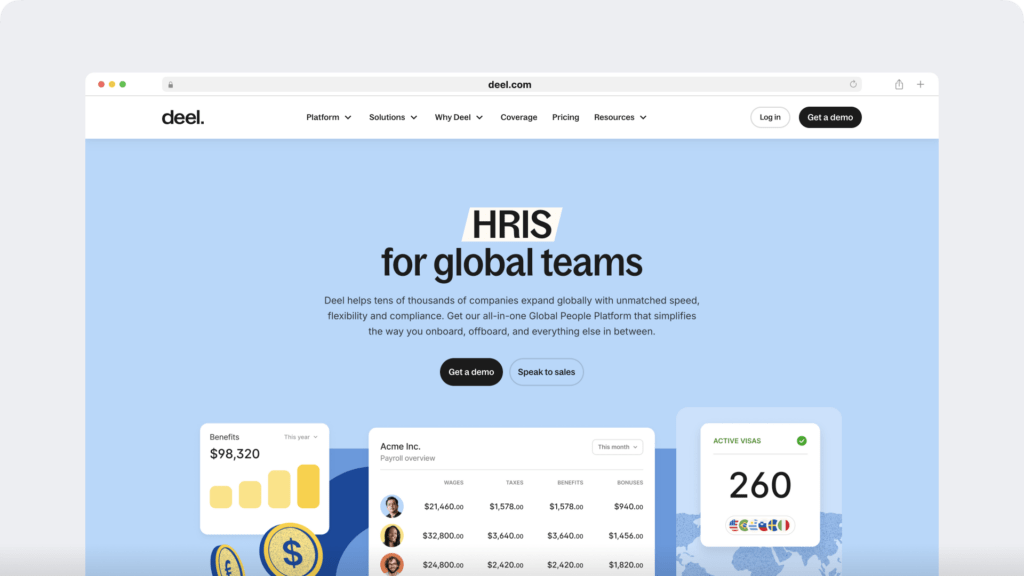
Provides analytics for remote and international teams, covering workforce costs, productivity, and compliance. Its strong customer support is particularly beneficial for navigating compliance in different regions.
Example: Deel allows companies with global teams to track project budgets and allocate resources efficiently.
6. Paycor – Best for employee engagement and retention insights
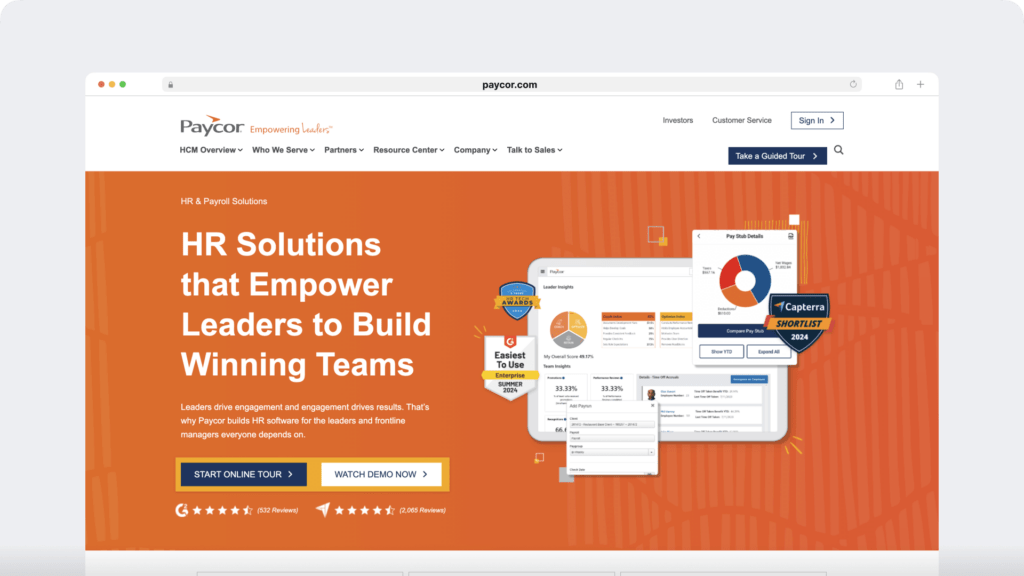
With a focus on engagement metrics, Paycor enables HR teams to track and analyze employee satisfaction and its impact on company culture
Example: Paycor alerts HR if engagement scores drop in a department, helping prevent turnover.
7. PerformYard – Best for performance management
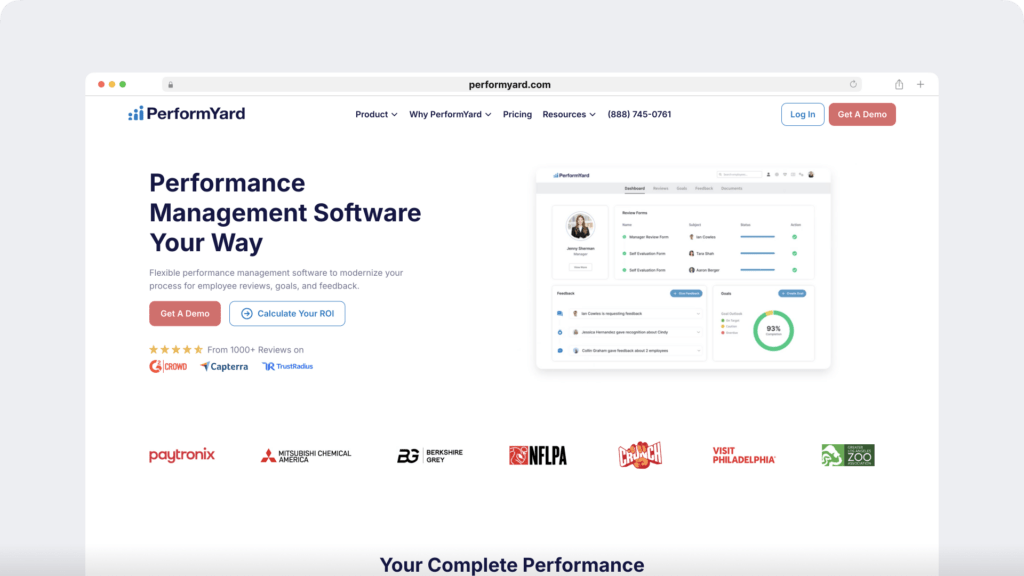
PerformYard excels at tracking performance metrics, supporting 360-degree feedback, and goal-setting. It also helps managers identify and address skill gaps through actionable insights.
Example: A software company uses PerformYard for quarterly reviews, enabling managers to set actionable goals.
8. One Model – Best for contextual data insights

One Model is known for integrating vast contextual data, pulling from diverse data sources, using algorithms to provide insights into workforce trends and performance.
Example: A large enterprise uses One Model to combine financial and employee data, assessing how labor costs affect revenue.
9. Trinet – Best for competitive compensation analysis
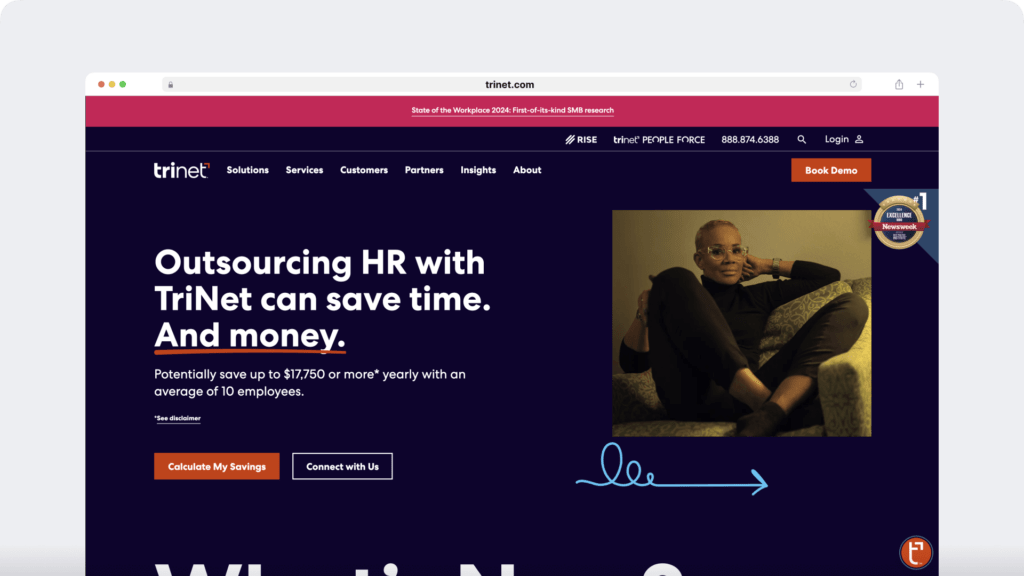
Trinet’s compensation analysis helps companies benchmark salaries and stay competitive, supporting equitable pay practices and better management of their human capital
Example: Trinet provides regional compensation comparisons, ensuring equitable pay practices.
10. Tableau – Best for deep data analysis
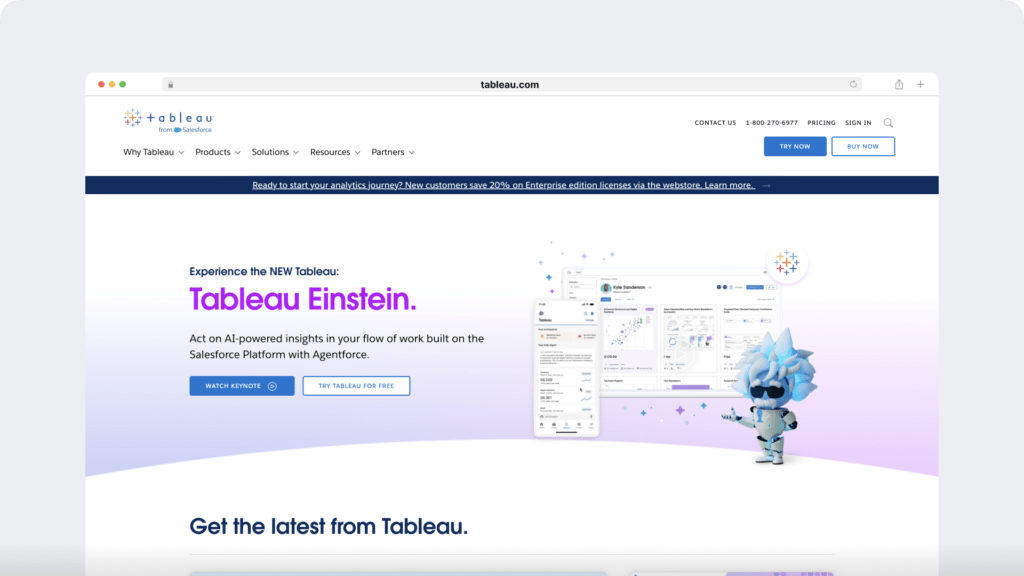
A leader in data visualization, Tableau is widely used for in-depth analysis of complex data-sets across industries as an HR software tool
Example: A financial services company uses Tableau to explore turnover and identify retention factors.
11. Qualtrics – Best for employee engagement
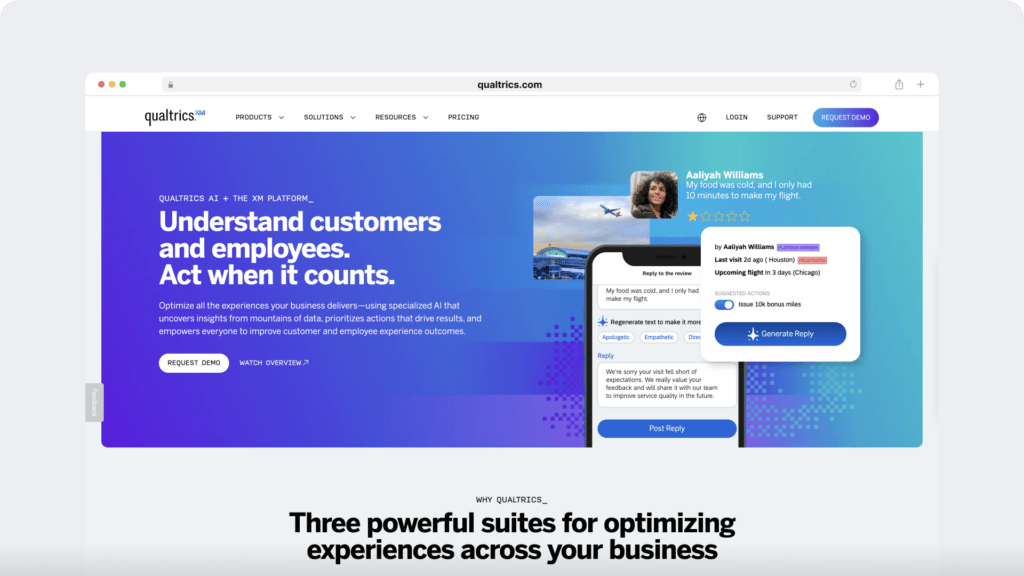
Qualtrics lets organizations survey employees to understand workplace sentiment and identify areas for improvement.
Example: A tech firm uses Qualtrics to assess employee satisfaction quarterly, adjusting policies as needed.
12. DreamTeam – Best for recruiting analytics
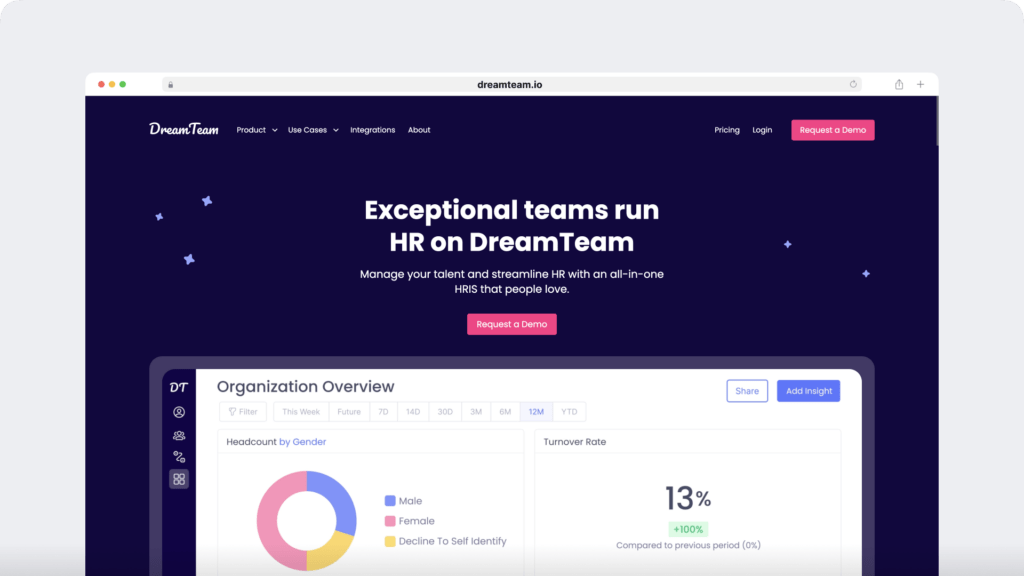
DreamTeam supports data-driven recruiting by tracking metrics like time-to-hire and candidate quality.
Example: A healthcare provider uses DreamTeam to streamline hiring for critical roles.
13. BambooHR – Best for an all-in-one solution
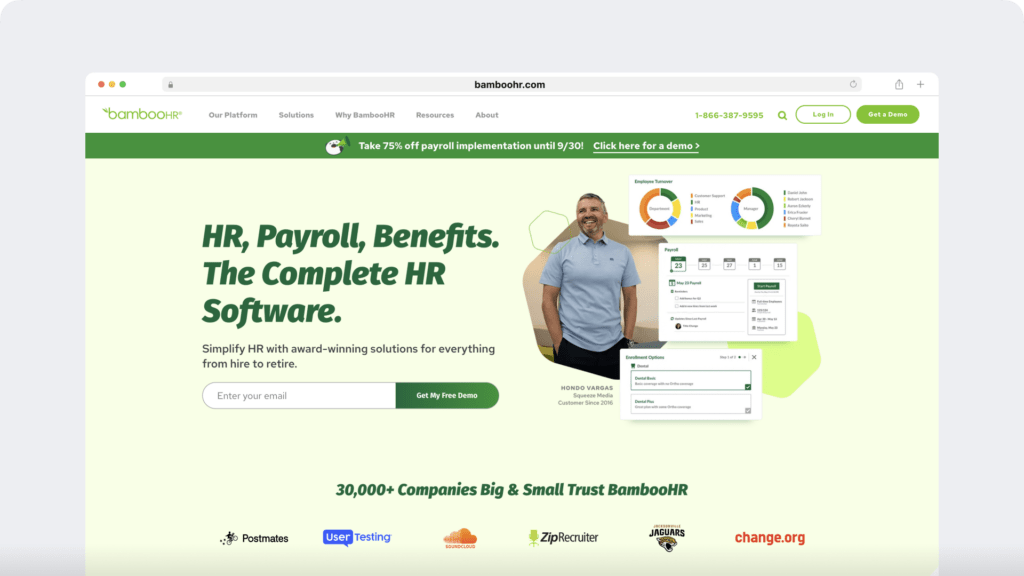
BambooHR offers recruitment, onboarding, and employee management tools, making it ideal for smaller businesses seeking a streamlined approach to multiple HR functions
Example: A startup uses BambooHR for end-to-end HR management, from hiring to engagement surveys.
14. ChartHop – Best for rewarding performance
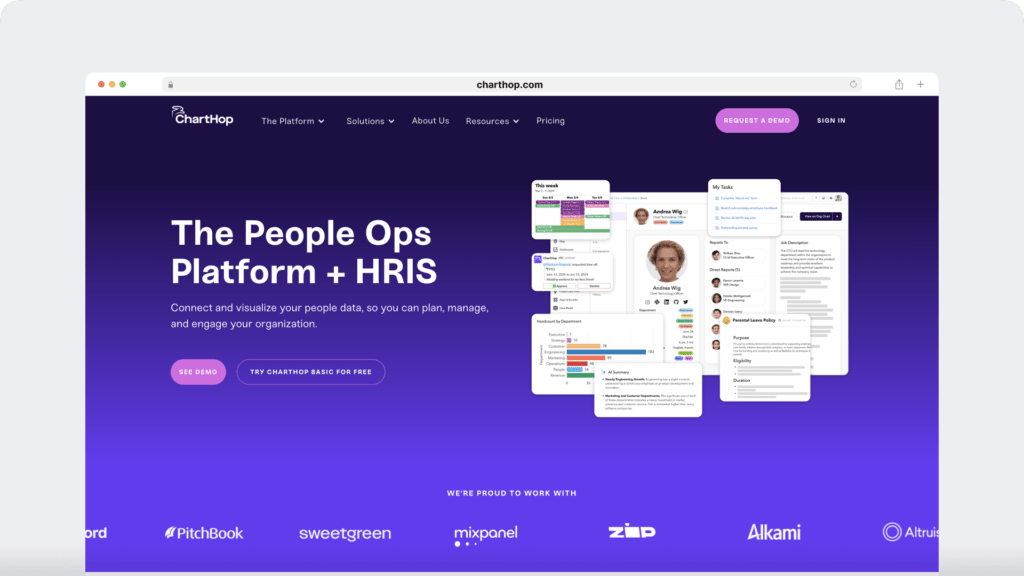
ChartHop combines performance management with compensation planning, helping HR leaders and companies reward employees based on data-backed performance.
Example: A sales company uses ChartHop to track metrics and offer competitive, data-driven incentives.
Choosing the right HR analytics tool
To find the best HR analytics tool for your business, consider the following:
Define your goals and objectives
Identify your HR goals, such as engagement, retention, employee turnover recruitment, or addressing skill gaps and match them with the tool’s strengths.
Evaluate ease of use and training needs
If your team is new to analytics, choose software with a straightforward interface and training resources. This is especially important for organizations transitioning from manual methods, such as spreadsheets, to more advanced analytics tools.
Balance cost and ROI
Assess each tool’s value relative to its cost, focusing on those with scalable plans that enable impactful, data-driven decisions
Consider scalability and integration
Ensure the tool can grow with your organization and integrate with existing systems.
How time doctor complements HR analytics
While HR analytics software offers valuable workforce insights, Time Doctor provides real-time productivity tracking to further enhance decision-making. Its intuitive design ensures a minimal learning curve, allowing teams to adopt it quickly and effectively. With time tracking, productivity reports, and activity level analysis, Time Doctor allows companies to monitor work patterns, optimize workflows and make more informed strategic decisions, aligning well with insights from HR analytics tools.
Explore Time Doctor to see how productivity tracking can enhance your HR analytics strategy.
Conclusion
HR analytics software enables companies to make strategic, data-informed decisions that improve recruitment, engagement, and employee development. You can build a data-driven HR strategy that supports an engaged and productive workforce by leveraging templates, choosing the right tool and complementing it with Time Doctor’s productivity tracking.
Ready to unlock the full potential of HR analytics software? Discover how Time Doctor can enhance your insights and drive productivity—view a free demo today!

Liam Martin is a serial entrepreneur, co-founder of Time Doctor, Staff.com, and the Running Remote Conference, and author of the Wall Street Journal bestseller, “Running Remote.” He advocates for remote work and helps businesses optimize their remote teams.


